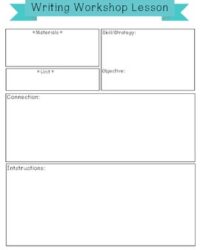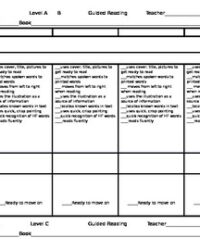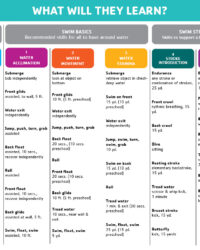Shared writing is a dynamic and effective instructional strategy where the teacher and students collaboratively compose a text. It’s a powerful way to model the writing process, demonstrate conventions, and build confidence in young writers. Crafting a successful shared writing lesson requires thoughtful planning, and that’s where a well-designed shared writing lesson plan template becomes invaluable. It provides a structured framework, ensuring all essential elements are covered, from pre-writing discussions to post-writing reflection.
Imagine walking into your classroom knowing exactly how to guide your students through the exciting journey of creating a piece of writing together. A robust template streamlines your preparation, allowing you to focus more on the interactive experience itself rather than getting bogged down in administrative details. It ensures consistency across lessons, making it easier to track student progress and adapt to their evolving needs.
Designing an Effective Shared Writing Experience
The foundation of any successful shared writing lesson lies in thorough preparation. Before putting words on the page, it’s crucial to establish a clear purpose and audience for the text. Engage students in brainstorming sessions, activating their prior knowledge and vocabulary related to the topic. This pre-writing phase is where you collaboratively decide on the genre, main idea, and key details. It’s also an excellent opportunity to introduce or review specific writing skills or conventions you intend to focus on during the lesson, such as using descriptive adjectives or varying sentence structure.
During the actual shared writing process, the teacher acts as a scribe, modeling the act of writing while incorporating student suggestions. This involves thinking aloud about word choice, sentence construction, and punctuation. The interactive nature of shared writing means constantly inviting student input, discussing alternatives, and making collaborative decisions about how the text should evolve. It’s a fluid process where revisions happen in real-time, demonstrating that writing is not a linear activity but one of constant refinement. Emphasize the importance of clear, legible writing as you record their collective ideas.
Once the initial draft is complete, the learning doesn’t stop. The post-writing phase is critical for refining the text and deepening understanding. Read the co-created piece aloud multiple times, allowing students to hear the flow and identify areas for improvement. This is the time for collaborative revision and editing, focusing on clarity, coherence, grammar, and spelling. You might guide students to add more details, rephrase awkward sentences, or correct punctuation errors. This stage reinforces the idea that all writers revise and edit their work.
An effective shared writing lesson also considers the diverse needs of learners. Differentiation can be embedded by strategically calling on students with varying levels of proficiency, providing sentence starters, or offering choice in contributions. For assessment, observe student participation, listen to their suggestions, and note their understanding of the targeted writing skills. The co-created text itself serves as a tangible artifact of collective learning, allowing you to gauge the class’s grasp of the writing concepts introduced.
Key Components of Your Template
- Lesson Title and Grade Level
- Learning Objectives/Standards
- Materials Needed
- Pre-Writing Activities (Brainstorming, Discussion Prompts)
- During Writing Steps (Teacher Role, Student Participation)
- Post-Writing Activities (Revision, Editing, Publishing)
- Assessment Strategies
- Differentiation Notes
Tips for Seamless Implementation
- Keep it focused on one or two teaching points per lesson.
- Allow ample time for student input and discussion.
- Be flexible and responsive to student ideas.
- Use a large writing surface visible to all students.
Why a Standardized Shared Writing Lesson Plan Template Matters
Adopting a standardized shared writing lesson plan template brings immense benefits to both educators and students. For teachers, it provides a consistent framework, reducing the time spent on creating lesson plans from scratch each time. This consistency ensures that every shared writing session covers essential instructional components, leading to a more coherent and impactful curriculum. It clarifies expectations for what should be taught and how it should be facilitated, promoting best practices across different topics and units.
Time is a precious commodity in education, and a well-designed template is a significant time-saver. Instead of reinventing the wheel for every lesson, you can simply fill in the blanks, focusing your energy on the content and student interaction rather than the structural design of the plan. This efficiency allows teachers to devote more attention to individual student needs, classroom management, and creative extensions of the lesson. It’s a proactive step towards reducing planning stress and increasing instructional quality.
Beyond individual classroom benefits, a uniform shared writing lesson plan template fosters a collaborative environment among educators. It becomes a common language for discussing instructional strategies and sharing successful approaches. New teachers can quickly grasp the mechanics of shared writing by utilizing existing templates, while experienced educators can refine and share their best practices. This shared resource library contributes to ongoing professional development, building a stronger, more cohesive teaching team focused on elevating literacy instruction.
- Ensures all critical teaching points are covered.
- Reduces lesson planning time significantly.
- Promotes consistency in instructional delivery.
- Facilitates easy sharing and adaptation of lessons.
- Supports new teachers in mastering the strategy.
- Provides a clear record for reflection and future planning.
Embracing shared writing as a core instructional practice can profoundly impact student literacy development. By actively involving students in the creation of text, educators demystify the writing process, making it accessible and enjoyable. The strategic use of a structured plan empowers teachers to deliver these engaging lessons with confidence and precision.
Ultimately, providing students with rich shared writing experiences, guided by a thoughtful template, cultivates not just better writers, but also more confident and collaborative learners. It’s an investment in their communication skills and a pathway to fostering a lifelong love for expressing ideas through the written word.


